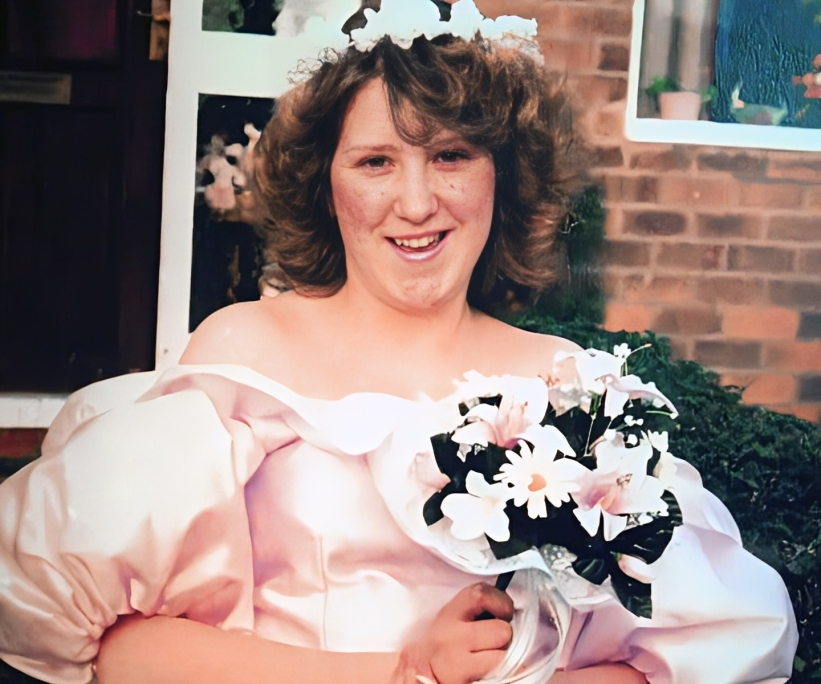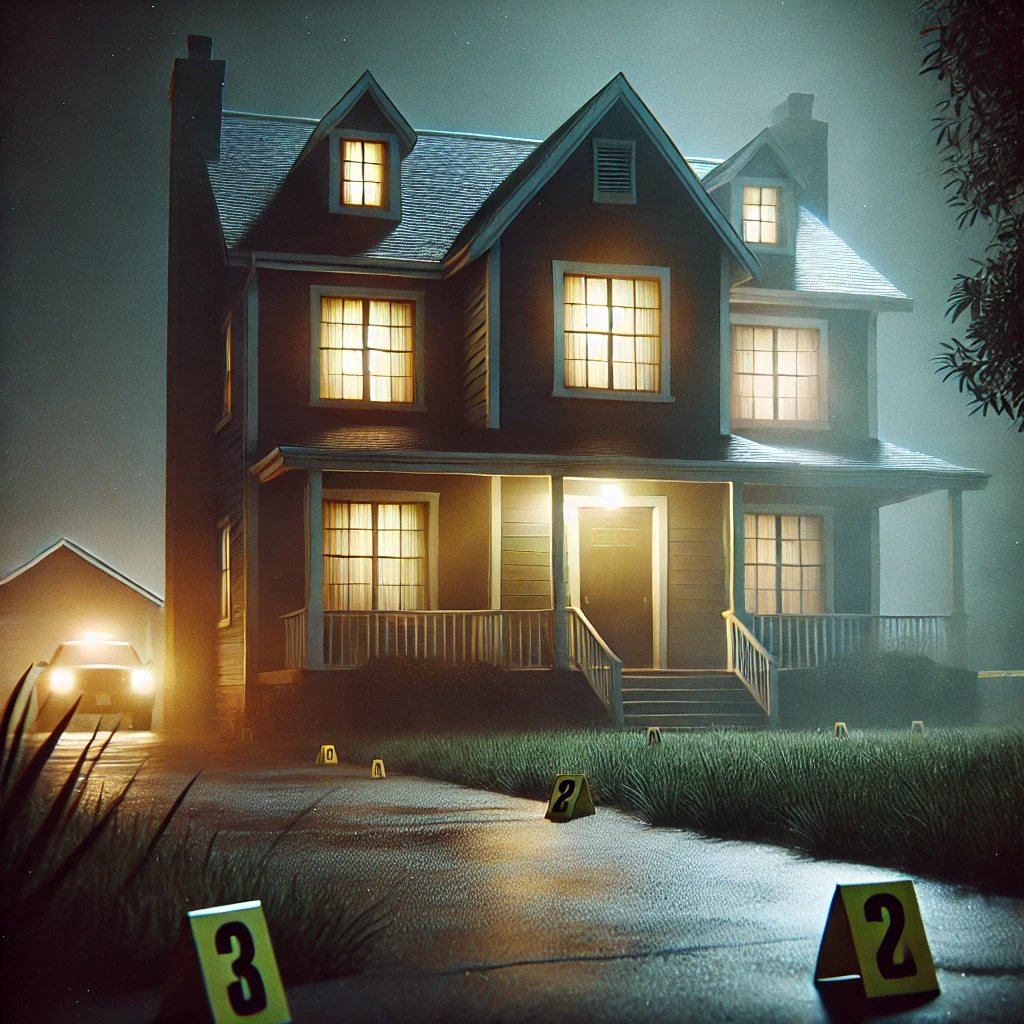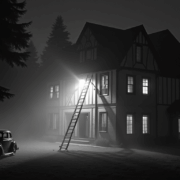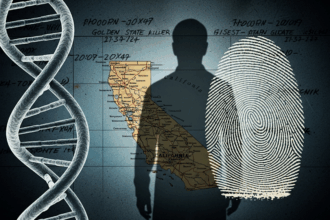Medical examiners faced an unprecedented challenge when sixteen-year-old Suzanne Capper arrived at Manchester’s Withington Hospital in December 1992. Their forensic examination revealed torture methods so severe that the case would redefine British understanding of criminal brutality.
Suzanne’s story stands among Britain’s most haunting criminal cases, where forensic evidence Evidence is any form of proof, such as objects, materials, or scientific findings, presented to establish or disprove a fact in a legal proceeding. It is used to reconstruct events and link or exclude individuals Read Full Definition exposed seven days of methodical torture inflicted by people she trusted. The medical team documented injuries that defied their extensive experience while investigators pieced together a sequence of events that would shock even seasoned detectives.
Evidence is any form of proof, such as objects, materials, or scientific findings, presented to establish or disprove a fact in a legal proceeding. It is used to reconstruct events and link or exclude individuals Read Full Definition exposed seven days of methodical torture inflicted by people she trusted. The medical team documented injuries that defied their extensive experience while investigators pieced together a sequence of events that would shock even seasoned detectives.
Six individuals orchestrated this calculated attack on a vulnerable teenager, leaving behind forensic evidence that would prove crucial to their convictions. This analysis examines the forensic findings, investigative breakthroughs, and lasting implications of a case that challenged Britain’s criminal justice system. We uncover how forensic science Discover the fascinating field of Forensic Science, the application of scientific principles to legal matters. This post delves into its many disciplines, from DNA analysis to crime scene investigation, its importance in the justice system, Read Full Definition helped deliver justice for Suzanne Capper through court documents, medical reports, and investigator testimonies.
Discover the fascinating field of Forensic Science, the application of scientific principles to legal matters. This post delves into its many disciplines, from DNA analysis to crime scene investigation, its importance in the justice system, Read Full Definition helped deliver justice for Suzanne Capper through court documents, medical reports, and investigator testimonies.
The Life of Suzanne Capper

Forensic victimology examines Suzanne Jane Capper’s life through crucial behavioral patterns and environmental factors. Born January 1976 in Manchester, England, Suzanne’s case profile reveals significant vulnerability indicators from her earliest years. Her biological father’s departure before her birth left Elizabeth, her mother, solely responsible for Suzanne and older sister Michelle [1].
Early childhood and family background
Behavioral analysis from witness testimonies identified key personality traits:
- Notably gentle disposition with high susceptibility to influence
- Demonstrated persistent seeking of acceptance
- Exhibited excessive compliance behaviors
- Displayed marked psychological vulnerability
Elizabeth’s marriage to John Capper temporarily stabilized Suzanne’s environment. This stability fractured when Suzanne turned 14, coinciding with her mother’s divorce and subsequent placement in local government care [1].
Relationship with the Powell family
The Powell family connection emerged through Suzanne’s role as their babysitter. Records show she cared for Jean Powell’s three children from age six [1]. The deterioration of her home environment pushed Suzann to increase herd presence at 97 Langworthy Road. Police reports later identified this residence as a hub for narcotics distribution and vehicle theft operations [1].
Events leading to December 1992
Significant environmental changes occurred at the Powell residence throughout 1992. Bernadette McNeilly’s arrival with three children created overcrowded conditions, forcing both women to share sleeping quarters in the dining area [1].
Despite documented instances of victimization from Powell and McNeilly, Suzanne maintained her presence at the residence. Michelle, her sister, departed in August 1992, citing concerns about Powell’s “evil new friends” [1]. A critical incident preceded the murder – Suzanne sought maternal protection after Powell’s assault, only to face rejection due to her mother’s boyfriend’s interference [1].
The household’s social dynamics included Jean’s estranged husband Glyn, McNeilly’s teenage boyfriend Anthony Dudson, and Jean’s brother Clifford Pook. This environment, characterized by substance abuse and exploitation, created conditions that forensic analysts would later identify as catalysts for the December 1992 events [1].
The Seven Days of Terror
Forensic evidence documents a methodical sequence of torture beginning December 7, 1992. Jean Powell and Bernadette McNeilly orchestrated Suzanne’s capture through a deceptive social invitation [2].
Initial capture and imprisonment
Physical evidence shows Glyn Powell and Anthony Dudson executed the initial assault. Their first act targeted psychological degradation – forcibly removing Suzanne’s hair and eyebrows, then compelling her to dispose of the evidence [1]. Medical records detail subsequent blunt force trauma from kicks and wooden implements [1].
Methods of torture and abuse
Crime scene analysis revealed systematic torture at two Langworthy Road locations. Evidence documented three primary abuse categories:
- Physical trauma: Systematic beatings, thermal injuries from cigarettes, chemical burns from forced immersion
- Psychological methods: Sustained audio assault using horror film soundtracks
- Chemical exposure: Involuntary amphetamine administration and caustic substance contact [2]
Witness statements describe ritualistic elements, with McNeilly announcing torture sessions using specific phrases [1]. Physical restraints – electrical cables, ropes, and chains – secured the victim to an overturned bed frame [3].
Failed opportunities for rescue
Witness David Hill, age 18, observed Suzanne’s condition during a house visit. Despite her direct appeal, Hill cited perpetrator intimidation as his reason for inaction [1]. Additional evidence shows Leigh and Dudson conducted vehicle repairs for Suzanne’s sister’s fiancé while concealing her captivity [1].
The violence culminated in dental extractions using pliers – a forensically significant attempt to impede victim identification [3]. Evidence indicates the perpetrators had predetermined their victim could not survive to testify.
The Final Hours
Crime scene reconstruction reveals the fatal sequence beginning December 14, 1992. Seven days of documented torture culminated in premeditated murder.
Journey to Werneth Low
Physical evidence places McNeilly, Dodson, and both Jean and Glyn Powell transporting Suzanne in a stolen white Fiat Panda’s trunk [1]. Investigators traced their 15-mile route to a remote location at Werneth Low, near Romiley. Witness statements record McNeilly’s laughter during transport, indicating psychological detachment [1].
The attempted murder
Crime scene analysis shows Glyn Powell and Dudson forcing Suzanne down an embankment. Temperature records indicate severe December conditions, with the victim clothed only in minimal garments [4]. Forensic evidence confirms McNeilly’s application of accelerant, followed by multiple ignition attempts by Powell and Dudson [1]. Audio evidence documents McNeilly’s taunting vocals during the immolation [5].
Suzanne’s survival and final statement
Medical examination documented 75-80% total body surface area burns [6]. Post-attack evidence shows remarkable survival behaviors:
- Physical evidence of upward embankment traverse
- Documented quarter-mile ambulation along Compstall Road
- Recorded verbal identification of perpetrators
Three witnesses discovered Suzanne at 6:10 AM, initiating an emergency response [1]. Burn pattern analysis required specialized identification methods – investigators secured positive identification through an unburned thumbprint [1].
Before losing consciousness, Suzanne provided crucial testimony identifying all six assailants and their location [1]. Medical records from Withington Hospital’s burns unit document a four-day survival period before death on December 18, 1992 [2].
The Investigation and Trial
Detective Inspector Peter Wall precisely mobilized Greater Manchester Police’s response. Officers secured 97 Langworthy Road at 7:30 AM on December 14 and apprehended all occupants [1]. The investigation’s magnitude emerged through evidence analysis, prompting Detective Wall’s stark assessment: “As the story began to unfold, we just couldn’t believe it” [1].
Police response and arrests
Crime scene examination yielded critical evidence:
- Hair samples recovered from exterior waste container
- Dental extraction tools discovered near holiday decorations [3]
- Case impact prompted officers to fund hospital flowers for Suzanne [1]
Court proceedings
Legal proceedings commenced on November 16, 1993, and lasted 22 days [2]. Defense strategies revealed conflicting narratives as defendants attempted to deflect responsibility [1]. Prosecution evidence presentations triggered visible juror distress, particularly during torture methodology testimony [2].
Verdicts and sentences
Jury deliberations concluded after nine hours fifty-two minutes on December 16, 1993 [1]. Mr. Justice Potts delivered his ruling: “Each of you has been convicted on clear evidence of murder which was as appalling a murder as it is possible to imagine” [1].
Court-imposed sentences established:
Life Sentences for Murder:
- Jean Powell (now Gillespie) – minimum 25 years
- Bernadette McNeilly – minimum 25 years
- Glyn Powell – minimum 25 years
- Anthony Dudson – minimum 18 years (later reduced to 16)
Additional Convictions:
- Clifford Pook – 15 years for conspiracy to cause grievous bodily harm
- Jeffrey Leigh – 12 years for false imprisonment [3]
Courtroom tensions peaked during sentencing – jurors displayed visible distress while Suzanne’s family members vocalized approval with “Yes! Yes!” [1]. Senior detectives classified this case among Britain’s most brutal crimes [7].
This prosecution established legal precedents for extreme cruelty cases, sparking debates about youth violence and sentencing adequacy for exceptional crimes [8].
Justice and Aftermath
Suzanne Capper’s murder left an indelible mark on the collective conscience of the UK, not only due to the shocking brutality of the crime but also because of the significant legal and societal implications it generated. The case highlighted the importance of forensic science in securing justice and sparked discussions about sentencing adequacy for crimes of extreme cruelty. Decades later, the release of all six individuals convicted in the case has reignited these debates.
Parole and Release of the Convicted
All six perpetrators involved in Suzanne’s murder have now been released from prison. This gradual process of parole has drawn widespread attention and criticism, as many feel the severity of their crimes warranted harsher or more prolonged punishment.
- Jean Powell (now Jean Gillespie)
Jean Powell, once regarded as one of the ringleaders of the crime, was released on licence in 2017. She had served 24 years of her life sentence, which had a minimum term of 25 years. Despite being released slightly earlier than her minimum term, her parole caused significant outrage among those who believed she should have served a longer sentence. - Bernadette McNeilly
McNeilly, the second key orchestrator, was also released on licence in 2015 after serving over 22 years. McNeilly’s involvement in Suzanne’s torture, including the act of dousing her in petrol and setting her alight, made her release particularly controversial. Critics argued that her crime reflected a level of cruelty that rehabilitation programs could never truly address. - Glyn Powell
Glyn Powell, another central figure in the crime, was the last of the perpetrators to be released, granted parole in May 2023. His release marked the end of incarceration for all those involved in Suzanne’s murder. Powell had served the full minimum term of his life sentence but remained a contentious figure due to his instrumental role in Suzanne’s torture and murder. - Anthony Dudson
At just 16 years old at the time of the crime, Dudson received a reduced minimum sentence of 18 years, later adjusted to 16 years on appeal. He was released on licence in 2013, having served his minimum term. His young age and perceived susceptibility to influence during the crime raised questions about his culpability versus his potential for rehabilitation. - Clifford Pook
Clifford Pook, convicted of conspiracy to cause grievous bodily harm, served a 15-year sentence. He was released in the mid-2000s after serving his full term. Although his role was considered less central than others, his conviction reflected his active involvement in the conspiracy. - Jeffrey Leigh
Leigh, who was convicted of false imprisonment, served 12 years and was released in the early 2000s. His role, while not as direct as the others, contributed to Suzanne’s captivity and eventual murder.
Public Outcry and Ongoing Debates
The release of the perpetrators has been met with public outcry, particularly from Suzanne’s family and victim advocacy groups. The gradual release of the individuals responsible for such a heinous crime has reignited debates surrounding the adequacy of sentencing for extreme crimes and the efficacy of rehabilitation programs for violent offenders. Many have questioned whether justice can truly be served when individuals who committed such atrocities are allowed to reintegrate into society.
Critics of the parole system argue that the psychological and physical trauma inflicted upon Suzanne was so severe that life imprisonment without parole should have been the standard for all involved. Meanwhile, proponents of rehabilitation contend that these individuals, after decades of incarceration, may have been reformed and deserve an opportunity to contribute to society.
Impact on Suzanne’s Family
For Suzanne’s family, the release of her killers has been a deeply traumatic experience. Her mother, Elizabeth, and sister, Michelle, have consistently expressed their dissatisfaction with the legal system, which they feel has failed to provide adequate justice for Suzanne. The parole process has forced them to relive the pain of Suzanne’s murder, with each release reopening old wounds.
Legacy and Lessons Learned
Despite the controversy surrounding the release of Suzanne’s killers, her case remains a significant reference point in discussions about sentencing, parole, and the rehabilitation of violent offenders. It also continues to influence forensic science practices and victim support systems. The advancements made in forensic documentation, psychological profiling, and inter-agency cooperation during this investigation have become essential tools in modern criminal justice.
While Suzanne’s murder represents one of the darkest chapters in UK criminal history, the case has ensured that her story is not forgotten. It serves as a reminder of the need for vigilance, empathy, and systemic improvements to protect society’s most vulnerable members from similar atrocities.
References & Further Readings
[1] – https://www.youtube.com/watch?v=LUbxfQ1ctdc
[2] – https://en.wikipedia.org/wiki/Murder_of_Suzanne_Capper
[3] – https://www.manchestereveningnews.co.uk/news/greater-manchester-news/suzanne-capper-tortured-murdered-case-25962284
[4] – https://www.the-independent.com/news/uk/petty-grudges-settled-by-torture-spree-then-murder-suzanne-capper-s-short-life-ended-in-horror-at-the-hands-of-friends-who-lived-an-equally-bleak-existence-1468189.html
[5] – https://www.the-independent.com/news/uk/woman-sat-numb-as-girl-burned-court-told-of-teenager-s-screams-1464583.html
[6] – https://www.dailymail.co.uk/news/article-11722413/parole.html
[7] – https://www.independent.co.uk/news/uk/inquest-told-of-wounds-inflicted-on-burnt-girl-16-1477467.html
[8] – https://www.dailymail.co.uk/news/article-12073365/Last-gang-kidnapped-tortured-burned-alive-16-year-old-girl-walk-free.html
[9] – https://confidentials.com/manchester/exclusive-20-years-on-the-suzanne-capper-case












